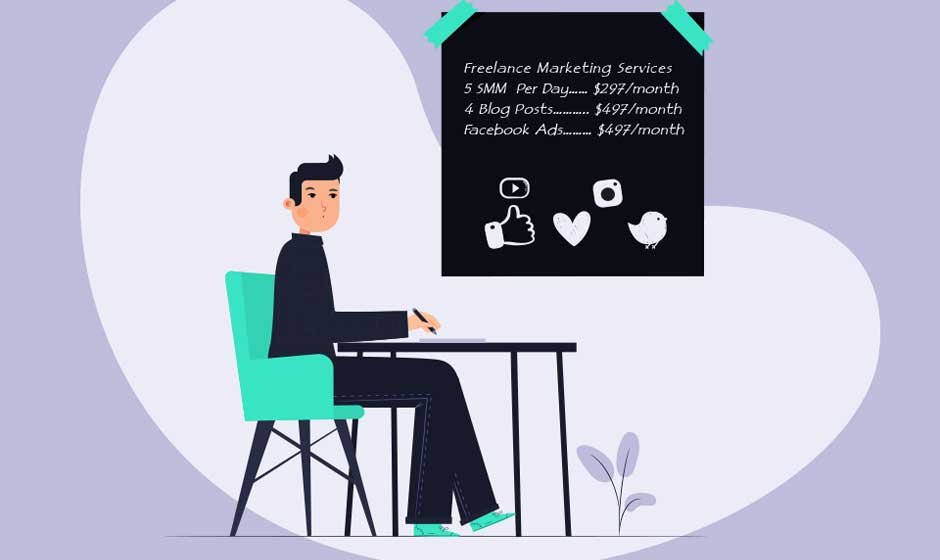One of the biggest challenges freelancers and entrepreneurs face is pricing their services. Charge too little, and you’ll struggle to make a profit. Charge too much, and you risk scaring off potential clients. So how do you find the sweet spot?
Pricing isn’t just about covering costs—it’s about ensuring long-term profitability while delivering value to your clients. Whether you’re a freelancer just starting out or a seasoned entrepreneur looking to refine your pricing strategy, this guide will help you set rates that work for you and your business goals.
Contents
1. Know Your Costs
Before you even think about pricing, you need to understand your costs. Too many freelancers set their rates based on what they think clients will pay, rather than what they actually need to earn.
Here’s what you should factor in:
- Business expenses – Software, subscriptions, marketing, website hosting, equipment, etc.
- Taxes – Set aside at least 25-30% of your income for taxes.
- Your time – If you bill by the hour, consider how much of your time goes into admin tasks, communication, and revisions.
Once you have a clear picture of your costs, you’ll know the minimum rate you need to charge to break even.
2. Research the Market
Market research is key to understanding what clients expect to pay for your type of service. Look at:
- What competitors with similar experience and expertise charge.
- Industry benchmarks for your field (for example, graphic designers, writers, and consultants all have industry-standard rates).
- Client expectations—some industries are price-sensitive, while others prioritize quality over cost.
But don’t just copy someone else’s rates. Your pricing should reflect your unique value, experience, and the specific benefits you bring to your clients.
3. Choose a Pricing Model That Works for You
There are several ways to price your services. The right model depends on your industry, how you work, and your personal preferences.
Hourly Rate
- Best for: Consultants, coaches, and freelancers with variable project scopes.
- Pros: Transparent and flexible for projects with shifting demands.
- Cons: Limits your earning potential—you only make money for the hours you work.
Project-Based Pricing
- Best for: Writers, designers, web developers, and marketers.
- Pros: Encourages efficiency—if you finish faster, you make more per hour.
- Cons: Requires clear scope definition upfront to avoid scope creep.
Value-Based Pricing
- Best for: High-end consultants, strategists, and specialized service providers.
- Pros: Focuses on the value you provide rather than the time spent.
- Cons: Requires strong negotiation skills and the ability to communicate ROI (return on investment).
Many successful entrepreneurs combine pricing models depending on the client and project.
4. Factor in Your Experience and Unique Value
If you’re highly experienced or have a specialized skill set, your rates should reflect that. Don’t compete with beginners on price—compete on expertise and results.
Here are a few ways to justify higher pricing:
- A strong portfolio that showcases past work.
- Client testimonials and case studies that prove your results.
- Additional value, such as strategy sessions, premium customer service, or fast turnaround times.
Experienced professionals like Matthew Dixon TruNorth emphasize the importance of setting prices that reflect the service provided and the value and long-term benefits clients receive.
5. Set Boundaries to Avoid Undervaluing Yourself
One of the biggest pricing mistakes freelancers make is over-delivering for free.
- Charge for extra revisions – Clearly define the number of revisions included in your pricing.
- Charge for rush jobs – Last-minute projects should come with a premium.
- Charge for consultations – If you’re giving away too much free advice, consider making consultations a paid service.
When clients understand the true value of your work, they’re more likely to respect your rates.
6. Test, Adjust, and Increase Your Rates Over Time
Your pricing isn’t set in stone. As you gain experience and deliver more value, your rates should reflect that growth.
- Start with a competitive rate and gradually increase as you gain more expertise.
- Test different pricing strategies with different types of clients.
- Evaluate client feedback—if no one is questioning your rates, you might be undercharging.
Raising your rates doesn’t mean losing clients—it means attracting clients who value your work.
Conclusion
Pricing your services isn’t about guessing—it’s about strategy. When you factor in your costs, industry benchmarks, and unique value, you can set rates that are both competitive and profitable.








